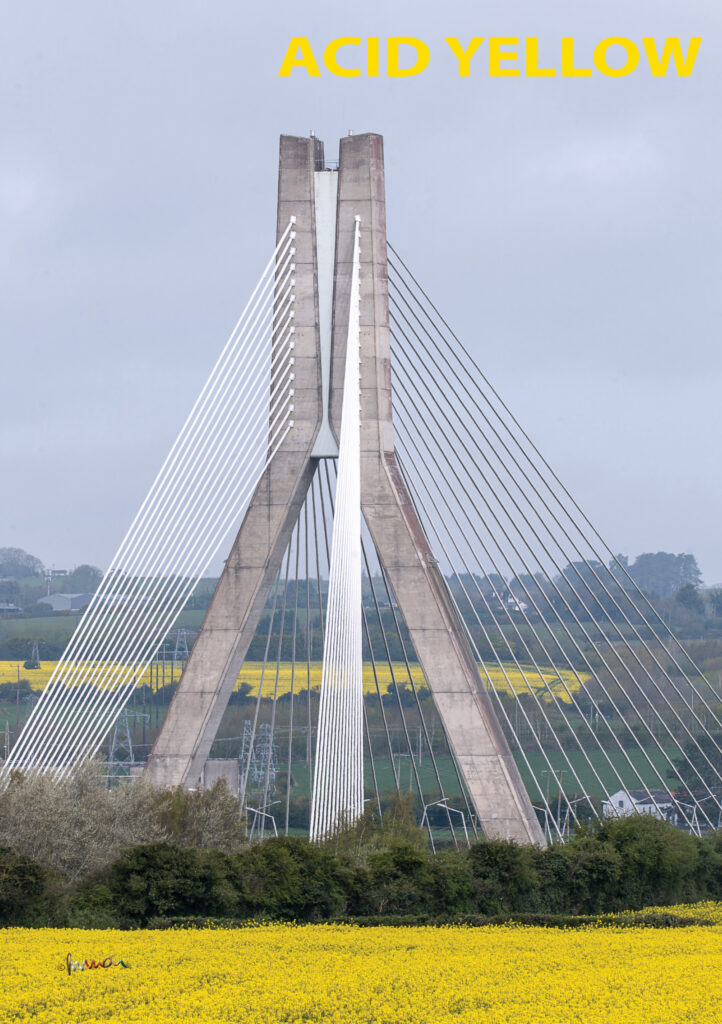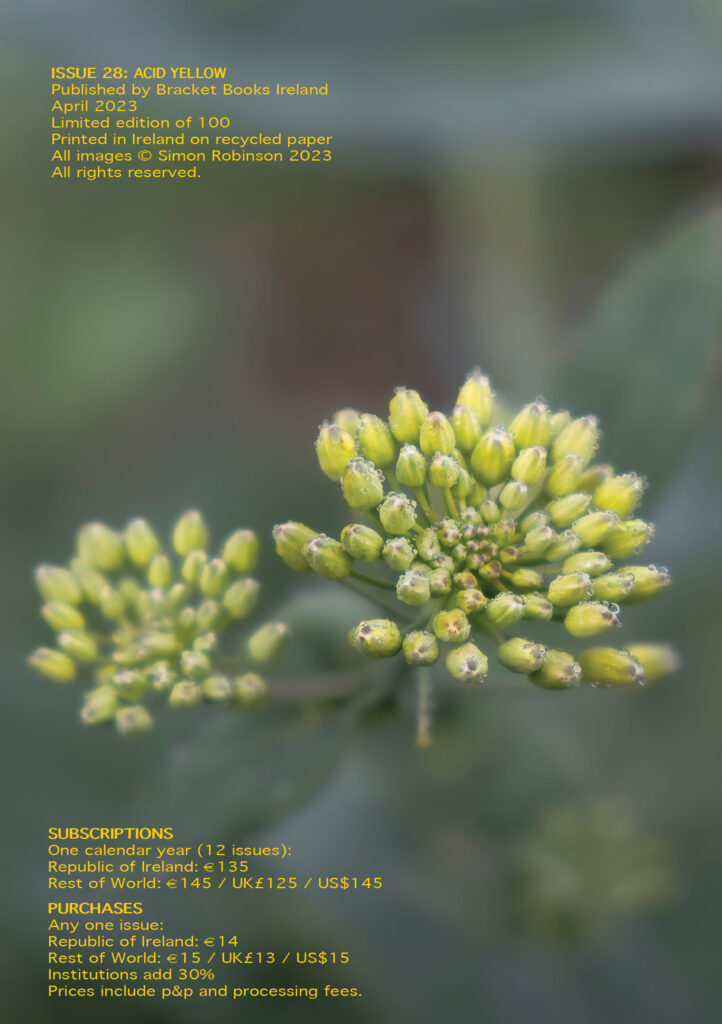This chapbook started with oat milk sweetened coffee. Truth and consequences took over.


Available now from Bracket Books Ireland at outlets like FabHappy or WalkingCommentary.
The ‘truths’ on an oat milk carton turned out to be convenient rather than accurate. Take the sweetness of my coffee. I learned that it comes from rapeseed oil aka canola. Rapeseed is a flowering mustard with high levels of erucic acid that can be harmful to humans. The Canadians created the canola cultivar to have low levels of erucic acid, the high erucic variants left for industrial purposes. Virtually indistinguishable by sight, both display yellow blossoms for about four weeks.
Heating and chemical processes convert a portion of the oil to sugars; the amount of sugar is high enough to sweeten coffee from just a finger of oat milk at the bottom of a cup. Of course, the carton is only required to list ingredients not contents. What other inconvenient truths might be hidden from casual view?
Global oilseed crop cultivation has doubled and production has tripled over the last thirty years. Genetic engineering is lauded for the increased yields while improving both the nutritional value and the quality for industrial purposes.
Journeys through the eastern counties of Ireland to photograph yellow landscapes yielded surprises. Ninety minutes watching a huge field of rapeseed blossom (pun intended) was in silence. Where were the noisy farmland crows? Why was there no buzzing? I went less than a kilometre east and ‘got on’ more than ten percent of all the bird species ever recorded on the island of Ireland. I’m not good at naming butterfly and insect taxa but I saw hundreds of different species of each them too.
Perhaps hypocritically, I managed all this of month’s photography with my diesel powered van. How can it be that 25% of the globe’s lands are dedicated to oilseed cultivation yet there’s only 5% biofuel in the diesel mix?
More global land is devoted to growing oilseeds than all fruits, vegetables, legumes, nuts, roots and tubers combined. Only cereal plantings exceed the area dedicated to vegetable oil production. Two of the top three drivers of global deforestation are allegedly vegetable oil crops. Oilseeds emit more greenhouse gases per kilogram than any other major crop. And it’s long been known that vegetable oil crops are inefficient; they need between 3 and 50 times more land per kilogram than most other crops.
Then I made contact with an apiarist. He’s placed thirty of his hives beside blossoming rapeseed fields. The fields will be in flower over four weeks and will yield 450 kg of honey from his team of 750,000 bees. Is this overlooked in the accounting that reports that 25% of global crop lands produce only 0.01% of the world’s nutrients?
I took a spotting scope to the Dublin mountains seeking distant oases of yellow in among forty shades of green. The yellow rapeseed fields seemed like deserts rather than oases. Such fields are sown with good intentions but I won’t be so mellow about the rapeseed in future coffee.
Acid Yellow in the title is a play on ‘erucic acid’, the official colour of the smiley face emoji and the yellows seen in the fields, in hues that vary with soil moisture, maturity, light conditions, RGB sensor recording and CMYK printing.
Credits and thanks are due to the unnameable people I asked to help me locate yellow fields all over Ireland. Special mentions to:
Fuji Tester who spotted the fields that turned out to lack animal life. Ironically, they were only 100 metres from the BirdWatch Ireland HQ.
Twitcher Nemo who reported fields for me to twitch near the East Coast National Refuge.
Asylum Granted accompanied me on one trip. Originally from a desert, experiencing an Irish Spring for the first time: ‘You have all the colours’.
Country Cousin knows which of the fields she reported became images.
Bernadoodle Tamer who introduced me to Open Hive, who gave me some excellent honey and more besides.
Elm Grieving who located fields that were too far south to visit this month.
Recently Retired who asked about the escapees and genetic engineering.
Kyiv Dynamo who inspires us.
Wexing Lyrical who isn’t the only one to wonder about the spraying of fungicides (early) and pesticides (after harvest).
Eye Spot who found the gold at the end of the rainbow.
Ardy Em without whom I’d never have seen an Amazon in the oilseed.
This chapbook was photographed and finalised during World Earth Week 2023. I made notes from reports, academic papers and articles from many sources. I fact-checked where I could with Encyclopaedia Britannica and official government publications. It wasn’t a surprise that the writings of nations, academics and corporations require as much de-biasing as the oat milk carton. It’s hard not to be sceptical about the oilseed business from a global perspective.
The Bracket Books chapbooks are available for online purchase through FabHappy but perhaps you’d prefer to enquire here. They’re published each calendar month, each copy uniquely numbered and posted at the end of each month. Prices include packaging, delivery, all currency and inflation risks.
2023 SUBSCRIPTIONS
One calendar year (12 issues):
Republic of Ireland: €135
Rest of World: €145 / UK£125 / US$145
Any one issue:
Republic of Ireland: €14
Rest of World: €15 / UK£13 / US$15
Institutions add 30%

Leave a Reply